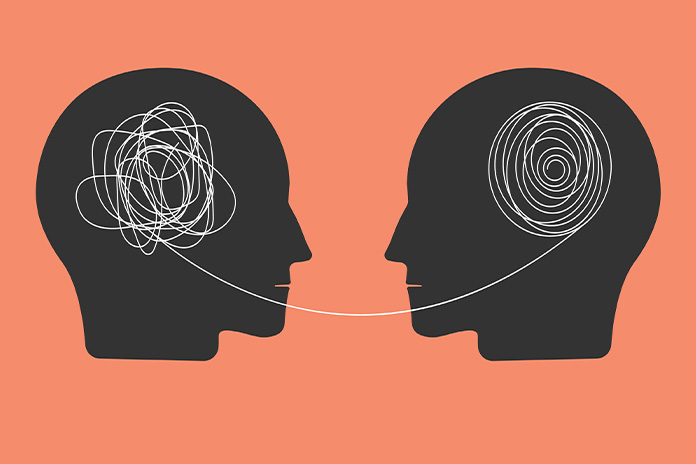
A SENIOR executive at a prominent tech company found himself struggling at work.
James Liu (not his real name to protect his privacy) encountered several communication breakdowns that hindered his ability to lead effectively. For instance, during team meetings, he noticed that team members were reluctant to share their ideas or feedback. This created an environment where innovation was stifled, and team morale dropped.
Additionally, James found it challenging to convey his vision clearly, leading to misunderstandings and misaligned goals among his team members. An anecdote from one session involved a project where timelines were repeatedly missed because of unclear instructions and expectations.
Burdened by stress, miscommunication and dwindling team morale, James felt his grip on leadership slipping. It was at this pivotal juncture that he sought the expertise of a coach.
In the fast-paced world of corporate leadership, even the most seasoned executives can find themselves grappling with challenges that inhibit their effectiveness.
Dr. Gerard Wong of Salience Consultants adopts a unique approach when it comes to enabling transformative leadership for his clients.
He integrates applications of neuroscience and the latest research findings on brain function to facilitate profound personal and professional growth.
As a certified coach (ACC) by the International Coaching Federation (ICF), Dr. Wong brings a wealth of knowledge from his extensive experience and qualifications in healthcare, pharmaceuticals and executive coaching.
The Initial Consultation
During their first meeting, Dr. Wong meticulously assessed James’ challenges. James admitted that despite his technical expertise and industry experience, he often felt disconnected from his team. Communication breakdowns were frequent, and he struggled to inspire and motivate his employees. This disconnect not only affected team productivity but also impacted company revenues and profits.
Dr. Wong knew that addressing these issues required more than conventional coaching techniques; it necessitated a deep dive into James’s cognitive processes and emotional intelligence.
The Neuroscience-Based Coaching Approach
Dr. Wong’s coaching sessions were rooted in neuroscience — understanding how the brain works to better manage emotions, motivations and relationships. He explained to James that leadership is as much about understanding oneself as it is about understanding others.

Session 1: Understanding the Brain
The initial sessions focused on educating James about neuroplasticity — the brain’s ability to reorganise itself by forming new neural connections throughout life. Dr. Wong illustrated how thought patterns could be rewired to foster positive thinking and resilience.
Applying findings from recent neuroscience research, Dr. Wong introduced James to mindfulness techniques designed to enhance self-awareness and emotional regulation. These practices aimed to reduce stress and improve decision-making capabilities by fostering a calm and focused mind.
Session 2: Emotional Intelligence
Next, Dr. Wong delved into emotional intelligence (EI), highlighting its critical role in effective leadership. Through various assessments and exercises, James began to recognise his emotional triggers and their impact on his interactions with his team.
One significant trigger was the pressure to meet quarterly financial targets, which often caused James to become impatient and short-tempered during stressful periods. Another trigger was criticism from upper management; James took this very personally and would react defensively, further straining his relationship with his superiors and subordinates.
By recognising these triggers, James learned techniques to manage his emotional responses more constructively.
By understanding the science behind emotions — how they originate in the amygdala and affect the prefrontal cortex responsible for rational thinking — James learned strategies to manage his responses better. This newfound emotional regulation translated into more constructive communication with his team.
Session 3: Motivation and Purpose
Dr. Wong guided James through an exploration of intrinsic motivation using Self-Determination Theory (SDT), which posits that people are motivated by autonomy, competence, and relatedness. By aligning his work with his core values and purpose, James found renewed energy and enthusiasm.
Dr. Wong used brain imaging studies showing how goal setting activates the brain’s reward system, releasing dopamine — the “feel-good” neurotransmitter. This insight helped James set meaningful goals for himself and his team, fostering a culture of achievement and satisfaction.

Transformational Results
The entire coaching process spanned over six months, with sessions held bi-weekly. Each session lasted about 60 minutes, providing ample time for in-depth discussion and practical exercises.
In between sessions, Dr. Wong assigned James specific tasks and reflection exercises to reinforce the concepts discussed during their meetings. This regularity ensured continuous progress and allowed James to apply new strategies in real-time, observing their effects on his leadership effectiveness.
The changes in James were profound.
Increased Productivity
Armed with techniques to manage stress and enhance focus, James’ productivity soared. He adopted time-blocking strategies to prioritise tasks efficiently, reducing being overwhelmed and increasing output.
Enhanced Team Bonding
James’ improved emotional intelligence enabled him to build stronger relationships with his team members. He held regular one-on-one meetings to understand their individual challenges and aspirations better. This empathetic approach led to increased trust and camaraderie within the team.
Improved Work Satisfaction
By fostering an environment where team members felt heard and valued, job satisfaction levels rose significantly. Employees became more engaged and committed to their work, resulting in lower turnover rates.
Increased Revenues and Profits
The positive changes in team dynamics directly impacted the company’s bottom line. Enhanced productivity coupled with innovative ideas from a motivated team led to increased revenues. Profit margins improved as operational efficiencies were optimised under James’s rejuvenated leadership.
A Vision For Future Growth
Perhaps most importantly, James developed an inspiring vision for the company’s future growth. Guided by Dr. Wong’s coaching on strategic planning and foresight — underpinned by neuroscience — James articulated a clear road map for innovation and expansion that galvanised his team towards collective success.
James’ journey from a struggling executive to an exemplary leader is a testament to the transformative power of neuroscience-based coaching. It allowed him to understand himself better and cultivate a deeper connection with his team, propelling them towards unparalleled success.
The Benefits of Neuroscience & Coaching
Dr Wong summarises the benefits of neuroscience-based coaching techniques.
Emotional Regulation: Leaders can learn to manage stress and emotional reactions better.
Communication Skills: Enhanced ability to listen actively, articulate thoughts clearly, and foster open dialogue.
Team Dynamics: Building stronger relationships within the team through improved empathy and understanding.
Decision-Making: Making more informed, rational decisions by reducing cognitive biases.
Motivation & Engagement: Aligning personal values with professional goals to foster intrinsic motivation.
Strategic Planning: Developing a forward-thinking approach underpinned by a clear vision and strategic foresight.
Resilience: Increasing mental resilience through mindfulness practices and stress reduction techniques.





















